#pre-1914
Text
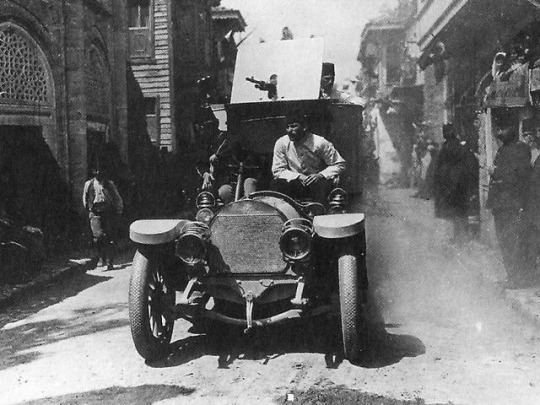
Ottoman technical during the 31st March Incident, an attempted countercoup against the Young Turks. Instanbul, 13 April 1909.
25 notes
·
View notes
Text

Early Poems of William Morris
1914
Artist : Florence Harrison
#early poems#william morris#1914#florence harrison#pre raphaelism#pre raphaelite#arthurian mythology#arthurian legend#arthurian literature#arthurian lore
8K notes
·
View notes
Text
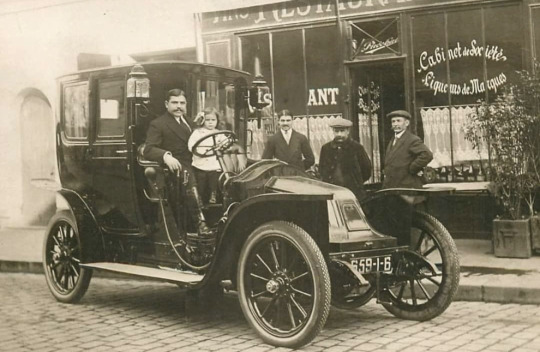
Pre-1914 Renault AG-1
@kenzosarrazyn_prewarcarpics
31 notes
·
View notes
Text
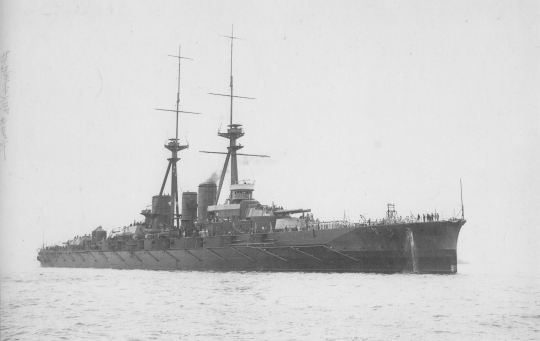
Croiseur de bataille Hiei au départ de Yokosuka en route pour Kure – 23 mars 1914
©Maritime History and Science Museum – Kure – Japan
#WWII#avant-guerre#pre-war#marine impériale japonaise#imperial japanese navy#ijn#marine militaire#military navy#marine de guerre#navy#croiseur de bataille#battlecruiser#classe kongo#kongo-class#hiei#yokosuka#japon#japan#23/03/1914#03/1914#1914
24 notes
·
View notes
Text
Like why is it specifically European-type leftists who have zero sense of pragmatism or... basic politics. Like okay great you can repeat all the right words etc but you're never gonna have more than 10% of the vote...
#tangential but also dont apply lenin in 1914 to obama in 2014. the us had some very significant changes in between#no rhetoric exists in a void unaffected by other world leaders. if lenin dealt w obama's foreign policy he would have wrote different things#because his works were custom tailored to the times they were written. and not to be a broken record but wildrow wilson=/=barack obama#pre ww1 europe =/= post ww1 ww2 cold war europe#rambles#politiposting
1 note
·
View note
Text
“This raises the question: if industrial production is necessary to meet decent-living standards today, then perhaps capitalism—notwithstanding its negative impact on social indicators over the past five hundred years—is necessary to develop the industrial capacity to meet these higher-order goals. This has been the dominant assumption in development economics for the past half century. But it does not withstand empirical scrutiny. For the majority of the world, capitalism has historically constrained, rather than enabled, technological development—and this dynamic remains a major problem today.
It has long been recognized by liberals and Marxists alike that the rise of capitalism in the core economies was associated with rapid industrial expansion, on a scale with no precedent under feudalism or other precapitalist class structures. What is less widely understood is that this very same system produced the opposite effect in the periphery and semi-periphery. Indeed, the forced integration of peripheral regions into the capitalist world-system during the period circa 1492 to 1914 was characterized by widespread deindustrialization and agrarianization, with countries compelled to specialize in agricultural and other primary commodities, often under “pre-modern” and ostensibly “feudal” conditions.
In Eastern Europe, for instance, the number of people living in cities declined by almost one-third during the seventeenth century, as the region became an agrarian serf-economy exporting cheap grain and timber to Western Europe. At the same time, Spanish and Portuguese colonizers were transforming the American continents into suppliers of precious metals and agricultural goods, with urban manufacturing suppressed by the state. When the capitalist world-system expanded into Africa in the eighteenth and nineteenth centuries, imports of British cloth and steel destroyed Indigenous textile production and iron smelting, while Africans were instead made to specialize in palm oil, peanuts, and other cheap cash crops produced with enslaved labor. India—once the great manufacturing hub of the world—suffered a similar fate after colonization by Britain in 1757. By 1840, British colonizers boasted that they had “succeeded in converting India from a manufacturing country into a country exporting raw produce.” Much the same story unfolded in China after it was forced to open its domestic economy to capitalist trade during the British invasion of 1839–42. According to historians, the influx of European textiles, soap, and other manufactured goods “destroyed rural handicraft industries in the villages, causing unemployment and hardship for the Chinese peasantry.”
The great deindustrialization of the periphery was achieved in part through policy interventions by the core states, such as through the imposition of colonial prohibitions on manufacturing and through “unequal treaties,” which were intended to destroy industrial competition from Southern producers, establish captive markets for Western industrial output, and position Southern economies as providers of cheap labor and resources. But these dynamics were also reinforced by structural features of profit-oriented markets. Capitalists only employ new technologies to the extent that it is profitable for them to do so. This can present an obstacle to economic development if there is little demand for domestic industrial production (due to low incomes, foreign competition, etc.), or if the costs of innovation are high.
Capitalists in the Global North overcame these problems because the state intervened extensively in the economy by setting high tariffs, providing public subsidies, assuming the costs of research and development, and ensuring adequate consumer demand through government spending. But in the Global South, where state support for industry was foreclosed by centuries of formal and informal colonialism, it has been more profitable for capitalists to export cheap agricultural goods than to invest in high-technology manufacturing. The profitability of new technologies also depends on the cost of labor. In the North, where wages are comparatively high, capitalists have historically found it profitable to employ labor-saving technologies. But in the peripheral economies, where wages have been heavily compressed, it has often been cheaper to use labor-intensive production techniques than to pay for expensive machinery.
Of course, the global division of labor has changed since the late nineteenth century. Many of the leading industries of that time, including textiles, steel, and assembly line processes, have now been outsourced to low-wage peripheral economies like India and China, while the core states have moved to innovation activities, high-technology aerospace and biotech engineering, information technology, and capital-intensive agriculture. Yet still the basic problem remains. Under neoliberal globalization (structural adjustment programs and WTO rules), governments in the periphery are generally precluded from using tariffs, subsidies, and other forms of industrial policy to achieve meaningful development and economic sovereignty, while labor market deregulation and global labor arbitrage have kept wages extremely low. In this context, the drive to maximize profit leads Southern capitalists and foreign investors to pour resources into relatively low-technology export sectors, at the expense of more modern lines of industry.
Moreover, for those parts of the periphery that occupy the lowest rungs in global commodity chains, production continues to be organized along so-called pre-modern lines, even under the new division of labor. In the Congo, for instance, workers are sent into dangerous mineshafts without any modern safety equipment, tunneling deep into the ground with nothing but shovels, often coerced at gunpoint by U.S.-backed militias, so that Microsoft and Apple can secure cheap coltan for their electronics devices. Pre-modern production processes predicated on the “technology” of labor coercion are also found in the cocoa plantations of Ghana and Côte d’Ivoire, where enslaved children labor in brutal conditions for corporations like Cadbury, or Colombia’s banana export sector, where a hyper-exploited peasantry is kept in line by a regime of rural terror and extrajudicial killings overseen by private death squads.
Uneven global development, including the endurance of ostensibly “feudal” relations of production, is not inevitable. It is an effect of capitalist dynamics. Capitalists in the periphery find it more profitable to employ cheap labor subject to conditions of slavery or other forms of coercion than they do to invest in modern industry.”
Capitalism, Global Poverty, and the Case for Democratic Socialism by Jason Hickle and Dylan Sullivan
595 notes
·
View notes
Photo


the longchamp race course in the poto book and rewrite! :)
#i chose longchamp since it's the most famous part of bois de boulogne#i didn't remember that it was in the book until i re-read that section! :o#there's a lot more to the bois than just longchamp tho! ;)#in the rewrite raoulstine visit lake inférieur le tir aux pigeons park de madrid the bagatelle chateau & rose garden and st. james pond#yeah it's a lot! :o#and there's plenty more where that came from...#they go to theatere des fleurs and a photography pavilion in pre-catelan (the bois' center) and those haven't been around since 1914! :o#they stay there for 5 hours which is definitely enough time since the bois is the second biggest park in paris#it makes you wonder what the biggest park is...#(edit: it's bois de vincennes on the opposite side of paris!)#i think the bois was also featured in the mini series since christine and not raoul take a boat ride (and kiss a thousand times) in a forest#the bois is certainly a forest! :o#with roads which surprised me since it's a park but they're in the book too! (not as streets but white roads) :o#rewrite christine and raoul certainly went on those roads when they were chased by that goose...#poto rewritten
0 notes
Text
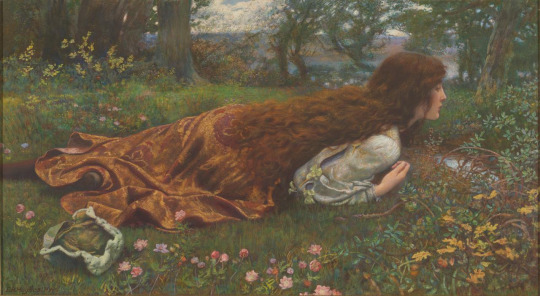
Edward Robert Hughes (1851-1914)
"The Princess Out of School" (c. 1901)
Pre-Raphaelite
Located in the National Gallery of Victoria, Melbourne, Victoria, Australia
#paintings#art#artwork#genre painting#female portrait#edward robert hughes#watercolor#watercolour#gouache#fine art#pre raphaelite#pre raphaelism#museum#art gallery#english artist#british artist#portrait of a girl#landscape#flowers#woods#long hair#early 1900s#early 19th century
901 notes
·
View notes
Text
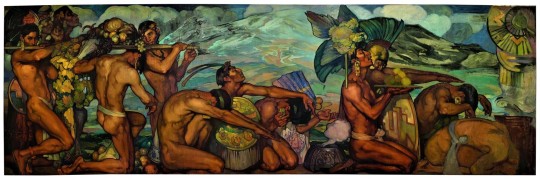
"Nuestros Dioses" (Our Old Gods) by: Saturnino Herrán, 1914
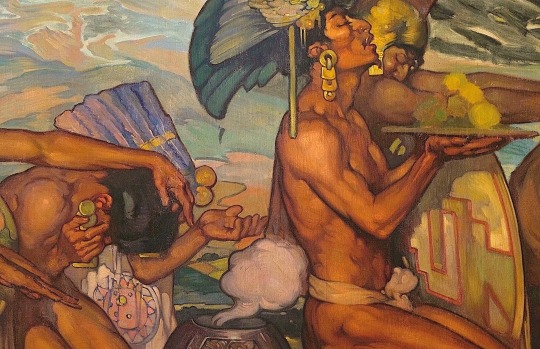
Detail of First Panel of Nuestros Dioses

La ofrenda (The offering) by: Saturnino Herrán, 1913
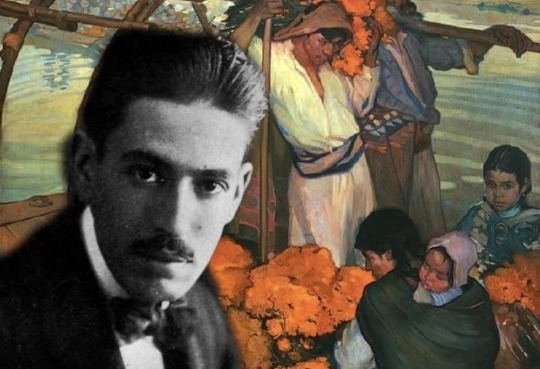
Saturnino Efrén de Jesús Herrán Guinchard, known as Saturnino Herrán , was a prominent Mexican painter of the early 20th century . His work is framed within pictorial modernism and is considered the initiator of Mexican muralism . His paintings are recognized for addressing pre-Hispanic myths as well as scenes of popular and indigenous classes. Although he only lived 31 years, he created some of the most recognized works of Mexican art, such as The legend of the volcanoes , Tehuana , La criolla del mantón (below), El cofrade de San Miguel , Our gods , among others. Since 1988 his work has been considered an artistic Monument in Mexico.
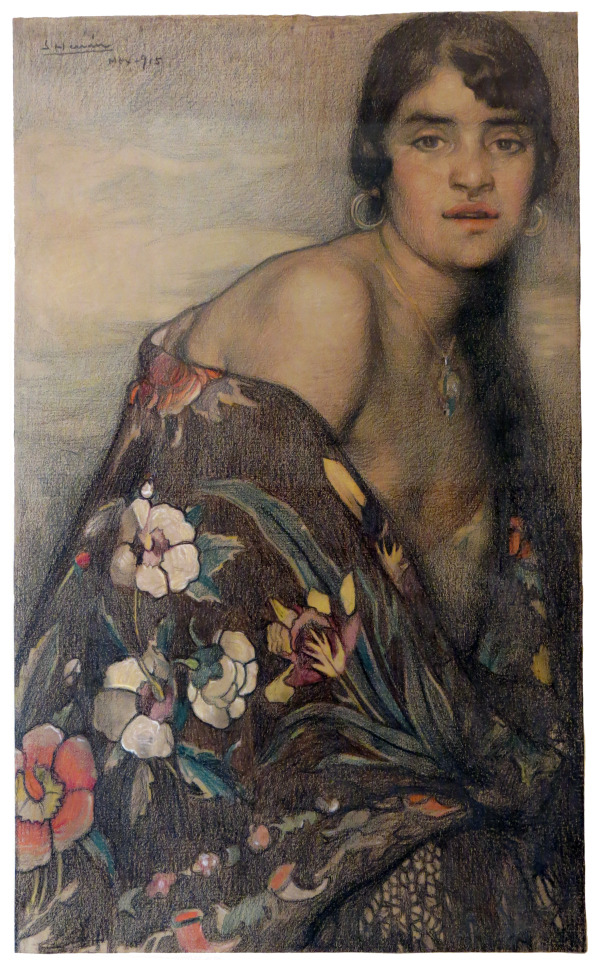
La Criolla del Mantón (The Creole of the Shawl) 1915

La obra (The Work) 1908
175 notes
·
View notes
Photo

Germany before World War 1.
by danmaps_org
🇩🇪 Before World War I, Germany was a key player in European geopolitics. It was surrounded by several border states, each with its own dynamics. To the west, France posed a historical rivalry, while to the east, Russia's growing influence created tension. In the north, the North Sea connected Germany to the maritime powers. The Alsace-Lorraine region, taken by Germany from France in the Franco-Prussian War (1870-71), remained a source of Franco-German animosity. Additionally, the complex web of alliances and rivalries in Europe contributed to the pre-war geopolitical landscape, ultimately leading to the outbreak of World War I in 1914. Stay tuned for the next post about Germany!
76 notes
·
View notes
Text
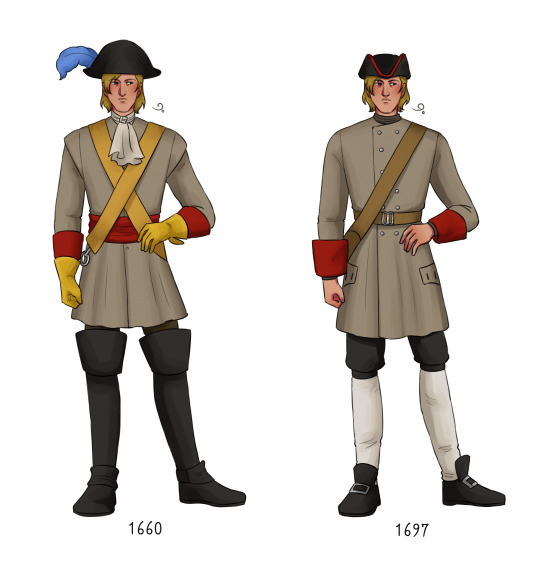
1660 - Cavalryman - Several wars under Denmark against Sweden.
1697 - Gunner - pre-Great Nordic War under Denmark against Sweden.

1774 - Skiing Soldier - pre-Theater War under Denmark against Sweden.
1785 - Infantryman - pre-Great Northern War under Denmark against Sweden.

1808 - Coast Guard Officer - Napoleonic Wars under Denmark.
1845 - Infantryman - pre-First Schleswig War under Sweden against Germany.
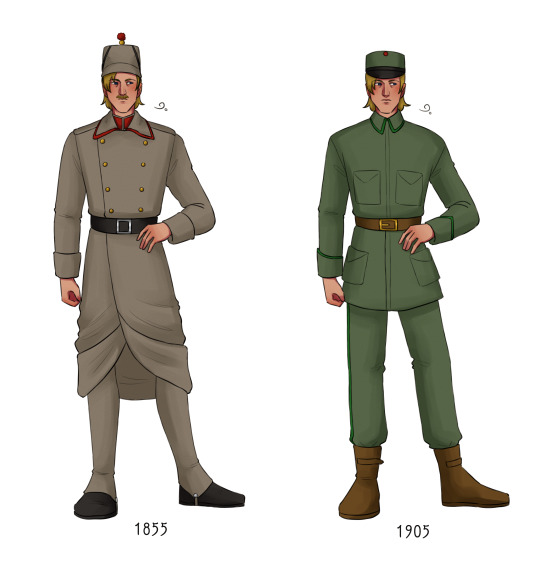
1855 - Infantryman - during the Crimean War (Sweden-Norway debated joining the UK and France against Russia).
1905 - Hunter - preparing for wars of independence against Sweden.

1914 - Engineer Officer - First World War.
1940 - Infantry Officer - Second World War.
#historical hetalia#hetalia#aph norway#hws norway#damn this took a long time#if you haven't heard much from me the last three days it's because I was studying and doing this#had this idea ages ago but never did it because: very time-consuming :P#but now I did it!!#SNL (store norske leksikon) has this great illustration of all these uniforms and it is inspiring every time I look at it#and then norgeshistorie.no posted a new article about militarization in Norway during the union with Denmark and I had to do the project#we all know how much I like drawing uniforms and historical clothing 😔😔😔#even bought a book about historical clothing this spring - for references#but it's a bit confusing so might get another one if I see a good one#I do love the historical asks I get because then I get to nerd out about all the cool history I know 👀#I have mentioned before but; Norway was perhaps /the/ most militarized country in Europe during the 1600s#there are a lot of stories from towns and villages nearby about the results of this#anyway; hope everyone enjoys Norway in uniforms!! 😁#I am sure some minor details will be inaccurate but I tried
144 notes
·
View notes
Text

Nikola Tesla looking out his Colorado Springs lab in 1899. The sign reads, "Great danger, keep out"
104 notes
·
View notes
Text

Early Poems of William Morris
1914
Artist : Florence Harrison
« Sir Peter Harpdon’s End »
#early poems#william morris#florence harrison#1914#sea#stairs#illustration#old illustration#vintage illustration#golden age of illustration#poetry#classic poem#pre raphaelite#pre raphaelism#arthurian mythology#arthurian legend#arthurian literature#arthurian lore#alice#sea gulls#castle#middle age#medieval#moyen âge
677 notes
·
View notes
Text

Marsden Hartley, Pre-war Pageant, 1914
113 notes
·
View notes
Text

Croiseur de bataille Hiei de la Marine Impériale japonaise – Yokosuka – Japon – 24 août 1914
©Maritime History and Science Museum – Kure – Japan
#WWII#avant-guerre#pre-war#marine impériale japonaise#imperial japanese navy#ijn#croiseur de bataille#battlecruiser#classe kongo#kongo-class#hiei#yokosuka#japon#japan#24/08/1914#08/1914#1914
13 notes
·
View notes
Text
Hidden Gems: Less than 150 Kudos

This week, we have one of our recurring rec lists - fics that you might have overlooked. Enjoy 13 fics that involve highly specific AU's, kink, Ludinus being evil, and of course, trips to Aeor. Check them out underneath the cut and of course, remember to comment and kudos if you like them!
Ages Past, Ages Hence by AthenaVine (12589, Mature)
Reccer's Content Notes: No Content Notes
Mostly canon-compliant fic series. The slow & careful courtship of Caleb & Essek during their trips to Aeor.
Reccer says: Omniscient perspective & visceral descriptions of the wizards' feelings

I used to hear a simple song by Amiactuallydoingthis (1378, General)
Reccer's Content Notes: No Content Notes
Meet cute in a university library
Reccer says: I liked it!

inked in skin; etched in bone by QuenaSparquea (56047, Teen)
Reccer's Content Notes: No Content Notes
Saving the world for a second time had a way of putting things in perspective. An exploration of magic and relationships in 31 pieces
Reccer says: This collection of interconnected stories sheds light on a slightly AU version of the Mighty Nein, in particular the Shadowhand as he navigates his past while planning for his future.

you must first invent the universe by renquise (3466, Teen)
Reccer's Content Notes: No Content Notes
a snippet of a sci-fi take on the pre-aeor mission
Reccer says: Suuuuper fascinating take on the group in a sci-fi world. The interactions btwn Essek and Caleb are so interesting and you call practically feel all the world building even in the short amount of time.

Frozen Ink by Beauteousmajesty (1663, Teen)
Reccer's Content Notes: No Content Notes
Essek’s chronic pain gets worse once winter has arrived in Rexxentrum. Luckily, Caleb is good at fire.
Reccer says: Domestic and sweet ❤️

Golden hour by Technojuicebox (1914, Mature)
Reccer's Content Notes: No Content Notes
Essek needs help after an experiment of intimate nature has gone wrong.
Reccer says: I love the sexual tension between them

Suspicions (The Empire Spy) by Im_sorry_dont_judge_me (8249, Explicit)
Reccer's Content Notes: Dubcon/Consensual Non Consent
Essek learns of one of Caleb's fantasies and agrees to play it out with him. Then Caleb insists on returning the favor.
Reccer says: I really like that some of the kink negotiation scenes are included - communication is sexy.

farewell star by narspicious (8297, Mature)
Reccer's Content Notes: Choose Not to Warn, Major Character Death
When Caleb Widogast dies in Aeor, Essek vows that not even the gods will stop him from bringing back the man he loves.
Reccer says: I loved the atmosphere and the premise a lot!

so volatile an equation by bloodredribbon (8459, Mature)
Reccer's Content Notes: Mutual dubcon, manipulation
After Caleb witnesses Essek's conversation with Da'leth, Essek kidnaps him before he can tell the Nein what he saw.
Reccer says: It's so messy, a lovely dark fic of what could have happened had Essek seen Caleb

of things yet to come by ghostsquidswrites (10467, Mature)
Reccer's Content Notes: No Content Notes
Ludinus imprisons Caleb in a sleeping spell to try and get Essek to do his bidding. Essek tries to use magic to figure out a way out of it.
Reccer says: I love it when Essek interacts with the rest of the nein - and here, also other NPCs - and I'm a big fan of the wizards nerding out about spells.

The Icarus to Your Certainty by ithilielthechosenone (14091, Mature)
Reccer's Content Notes: No Content Notes
In Aeor, just the two of them, there are many things to finally resolve. Not least of all the question of what they could be to one another.
Reccer says: This fic has so many of the things I love about Shadowgast - Essek hanging out with Reani, pining, travels to Aeor, considerations of time travel shenanigans, guilt and learning to love themselves through loving others - it's a fantastic read and deserves to be a classic.

I want you to hold me (don't let me go) by Multifandom_damnation (2316, Teen)
Reccer's Content Notes: No Content Notes
After the final battle with Trent Ikithon, Caleb goes home to a worried and waiting Essek, who puts him back together as best he can
Reccer says: The soft coda to Echoes of the Solstice that they deserve

some branch of stars we see by SongOfWizardry (1721, Teen)
Reccer's Content Notes: WIP
A shadowgast teaching AU where Caleb is training Essek to be a secondary school teacher.
Reccer says: It's a highly specific AU in terms of author's experience, and I love how it also fills in the relationships that Caleb has with the rest of the Nein.

Aeor is for Lovers is an 18+ Shadowgast Discord server. The above fanfic recommendations were pulled from our community for this weekly event. All fics, unless otherwise specified, will primarily feature Shadowgast.
Check out the previous Hidden Gem Recs Lists here [1] [2] [3] [4]
Have any questions about what this is? Check out the FAQ! Next week, we'll be featuring spanking!
64 notes
·
View notes